American View
Feature
HBI, a Pioneer in Gender Studies
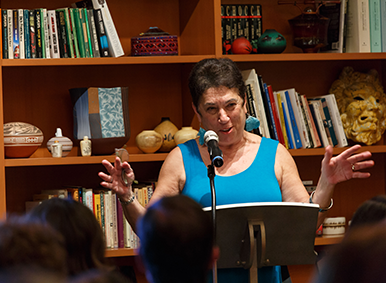
Melissa Klapper spent years poring over teenage Jewish girls’ diaries, yearbooks, confirmation programs—even their love letters. “The annoying part of the love letters is that the women saved the love letters, but the men did not,” sighed Klapper, a professor of history and Jewish studies at Rowan University in Glassboro, N.J. “It’s extremely rare to find both sides of the correspondence.”
Klapper’s interest was hardly prurient: Those glimpses into the adolescent psyche formed the basis for her 2005 book, Jewish Girls Coming of Age in America, 1860-1920, which was the first major work of research into Jewish girlhood and a landmark in the burgeoning field of Jewish gender and family studies.
“It was a field whose time had come,” said the 44-year-old Klapper. And for that, much of the credit goes to the Hadassah-Brandeis Institute (HBI), whose support financed many of Klapper’s trips to archives in Cincinnati, Boston, Minneapolis and elsewhere.
Based at Brandeis University in Waltham, Mass., HBI is celebrating its 20th anniversary as the world’s first research center dedicated to Jews and gender. “It’s hard for people to understand today, but it was a brand new topic, a whole brand new field we could create,” said Shulamit Reinharz, 71, HBI’s founding director and a Brandeis professor of sociology who retired from both positions this year. The feminist impulse animating HBI, Reinharz explained, was “reclamation—bringing women into the scholarship, focusing a spotlight on all the things that were missing.”
As Klapper discovered, a trove of Jewish women’s history was just waiting to be uncovered. Archived in dusty university files, those diaries, letters, magazines and even report cards were unknown until Klapper and her colleagues secured the research grants to spend time reading them. “The diary of a 16-year-old girl is not meaningful to most people,” Klapper acknowledged, noting that one of the individuals whose letters she explored was the teenage Henrietta Szold, the founder of Hadassah. “Nobody is going to pay to digitize” such things.
But HBI’s significant investment in Klapper’s research—at least a half-dozen grants over the years, starting while she was a graduate student at Rutgers University—did more than just bring to light the formative experiences of Jewish girls in an era when, unlike boys, they were still graded on comportment.
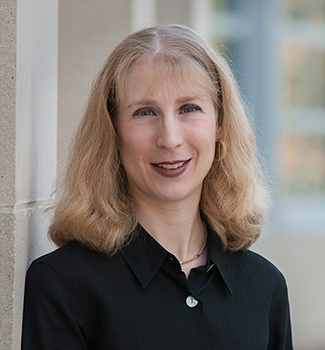
It also helped Klapper explore the teenage roots of the activist spirit that inspired a generation of influential Jewish women, which became the subject of the most recent of her three books, Ballots, Babies, and Banners of Peace: American Jewish Women’s Activism, 1890-1940, the 2013 winner of the National Jewish Book Award in Women’s Studies.
That same activist legacy has inspired both Hadassah and the institute itself, which Reinharz spearheaded—together with colleagues and a coalition of Hadassah leaders—to address what female scholars complained was a widespread dismissal of gender-oriented research.
The institute’s founding came at a fortuitous moment. Women’s studies was maturing as a discipline, and over the past two decades, gender issues have steadily gained prominence in both secular and Jewish discourse.
“Had HBI been founded 40 years ago, I think it would have been too early, and had it been founded today, there would have been a sense that it had been too late,” observed Jonathan Sarna, a Brandeis history professor who has collaborated with HBI on women’s studies projects and serves on its Academic Advisory Committee.
Since its inception, the institute has published more than 70 books, awarded hundreds of thousands of dollars in research grants and sponsored dozens of scholars- and artists-in-residence. The result is a wider discourse around Jewish feminism and a generation of scholars who have influenced topics as diverse as abortion, women pioneers in Israel and female representations in ancient texts.
These scholars include not only Klapper, but also figures like Margalit Shilo, 75, a history professor at Israel’s Bar-Ilan University, whose long-ignored research into farms run by women in pre-state Israel was published and translated by HBI; and Elana Sztokman, 47, an American-born olah who established the Center for Jewish Feminism in Israel after having two award-winning books published by HBI.
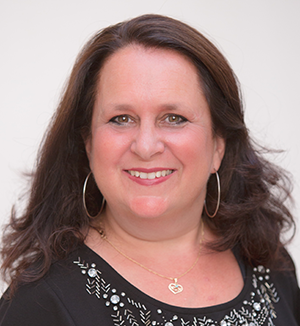
Sztokman was an adjunct professor in Israel struggling for recognition of her studies of Orthodox feminism when HBI awarded her a junior research grant in 2008. A few years later, Sztokman encountered Reinharz at an HBI conference and boldly asked her to publish her research. To her delight, Reinharz agreed. That 2012 book, The Men’s Section: Orthodox Jewish Men in an Egalitarian World, published as part of the HBI Series on Jewish Women—49 books in the series have been published so far—won a National Jewish Book Award in Women’s Studies. HBI also paid to send Sztokman on a book tour, ensuring her research got the widest audience possible.
“HBI is providing a really important model of women supporting other women by saying, ‘We think your work and creativity are valuable, and we think they should be heard around the world,’ ” said Sztokman. Her second book, on gender in Jewish day schools and co-written with Chaya Rosenfeld Gorsetman of Stern College for Women, was also published by HBI and won another National Jewish Book Award the following year,
for Education and Jewish Identity. “Who else is going to do that?” asked Sztokman.
Before HBI, that was a more difficult question to answer, according to Pamela Nadell, who directs the Jewish Studies Program at American University and specializes in American Jewish and women’s history. “I used to joke that I’d work on these male projects, and after I had tenure, I would write about Jewish women,” said Nadell, whose research has illuminated women’s historical quests to become rabbis.
In the 1980s, Nadell recalled, she proposed a theme issue on Jewish women for the academic journal American Jewish History. A male colleague questioned her judgment: “Is there anything left to write?”
“HBI made it clear that there was a lot more to say, and also exploded open the realm of subjects and topics,” reflected Nadell, who spoke at one of the institute’s early conferences. “But there were women teaching Jewish studies long before women’s studies burst onto the academy in the 1970s. They were pioneers,” but they were ignored.
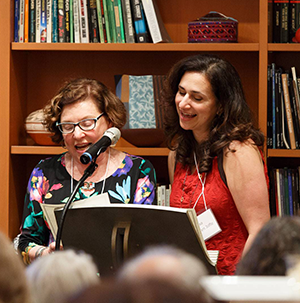
Reinharz was already one of those pioneers when she founded HBI, having previously created the Brandeis graduate program in Jewish women’s studies. She is widely lauded not only for her tenacious and far-reaching intellectual vision, but also for social savvy that has made her a prodigious fundraiser. HBI was established with a founding grant from Hadassah, but the majority of its current operating budget of $930,000 now comes from other sources, mostly private donations and endowments. The affiliation with Hadassah endures, however, through a liaison to the HBI board; lectures and activities coordinated with Hadassah events and chapters; and a Hadassah endowment that comprises approximately one quarter of HBI’s budget.
For Reinharz, HBI’s magic lies in its expansive philosophy. “We don’t throw out the old while we embrace the new,” she said. “We want to stretch the boundaries of what’s being asked.”
The boundaries of gender itself have been increasingly called into question over HBI’s two decades, as issues like transgender bathrooms are now at the center of a national conversation. “The question of who is a woman or what is a woman is a question that’s been asked throughout history,” Reinharz noted, adding that current thinking has “flipped” the question—asking “how far we can stretch the parameters of what it means to be a woman.”
Such debates were struggling to find academic traction when Reinharz and her colleagues presented “Voices for Change: Future Directions for American Jewish Women,” a 1995 report from Hadassah’s National Commission on American Jewish Women, at UJA-Federation of New York’s annual conference 22 years ago.
“I thought maybe if we had 12 people attend, we’d be lucky, since there were 22 concurrent sessions taking place,” Jane Zolot recalled of the conference, where she was among the Hadassah leaders shepherding the nascent effort to promote Jewish gender studies, including Hadassah’s then-national president, Marlene Post. “But we must have had three or four hundred people.”
Reinharz and HBI’s founding co-director, Sylvia Barack Fishman—who traveled the country interviewing women for “Voices for Change”—convinced academics and benefactors that the timing was right for HBI’s line of inquiry.
“From the diversity of women that I encountered, it was clear to me that looking at the state of Jewish life through the lens of gender revealed aspects of American Jewish identity that you didn’t get with the standard approach,” recalled Barack Fishman, 74, who also teaches at Brandeis.
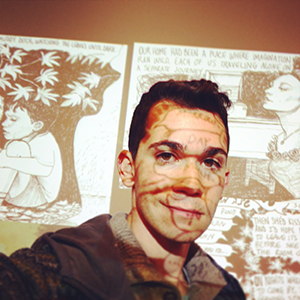
HBI deliberately took an international, interdisciplinary approach. Conferences and events have featured Jewish voices from North Africa and Latin America; a project on polygamy brought in Mormon and Muslim perspectives; and others have compared the experiences of religious divorce among Jewish and Muslim women in Boston.
Consistent with Hadassah’s Zionist priorities, Israel has been a particular focus. At Bar-Ilan University, Margalit Shilo now mentors a younger generation of Jewish female historians with the ongoing support of HBI. “I cannot stress how crucial it is for Israelis that they get recognition from the United States,” Shilo said, referring not only to research grants but also to publication and conference opportunities.
Scholars across the world connect through HBI’s Fresh Ideas blog and a YouTube channel; at the HBI Conversations series, which are far-flung gatherings of Jewish authors and readers; and in the pages of the twice-yearly Nashim, a journal HBI co-founded with Israel’s Schechter Institute of Jewish Studies. In addition, Jewish feminist artists have the opportunity to exhibit their work at Brandeis’s Kniznick Gallery.
HBI has engendered a powerful sisterhood within male-dominated academia, but it’s not quite a sorority. From the start, it has welcomed men like Sarna as well as Golan Moskowitz, a Brandeis doctoral student in Judaic studies who came to HBI as a summer intern while studying art at Vassar College. Born to an Israeli family of Holocaust survivors, the 30-year-old Moskowitz, who is gay, explored the fraught ramifications of his identity through cartoon narratives before focusing his scholarship on another Jewish gay male artist, the late children’s author Maurice Sendak.
“HBI became a natural home base for me, a place to meet people who were working at the intersection of gender and Jewish identity,” said Moskowitz, who, during his HBI internship in 2010, translated children’s Holocaust testimonies from Hebrew. HBI “creates an atmosphere of openness, generosity and curiosity,” he said.
The most tangible part of the HBI legacy is the publication of its books. Barack Fishman said the published books not only sell well and are used in courses but they also help female academics get tenure. A dozen of these books correspond to the HBI Project on Gender, Culture, Religion and Law, directed by legal scholar Lisa Fishbayn Joffe, who is now serving as HBI’s interim director.
A Canadian who wrote her Harvard dissertation on gender inequality in post-apartheid South Africa, Fishbayn Joffe says she wants to look at the diversity within the Jewish community and to demonstrate how lessons from Jewish history can address the challenges of responding to war, displacement and intolerance that face our world. HBI’s 2018 focus will be on refugees, inspired by new research on the impact of childhood trauma by its Project on Children, Families and the Holocaust. “I think that has a lot to teach us about the legacy of the war in Syria,” said Fishbayn Joffe.
Meanwhile, Klapper’s latest research concerns Jewish women’s overseas travels during the late 19th and early 20th centuries. Some of her subjects went for sightseeing, others to find mates, a good many for feminist political activism—“and sometimes all of the above, on the same trip,” she said. For Klapper, this perfectly illustrates the distinctive complexity of the Jewish feminine experience.
“These women might take two hours out of the conference they were attending about changing the world and go get measured for a new dress,” Klapper said. “It shows that people are more than the sum of their parts.”
Hilary Danailova writes about travel, culture, politics and lifestyle for numerous publications.








 Facebook
Facebook Instagram
Instagram Twitter
Twitter
Leave a Reply